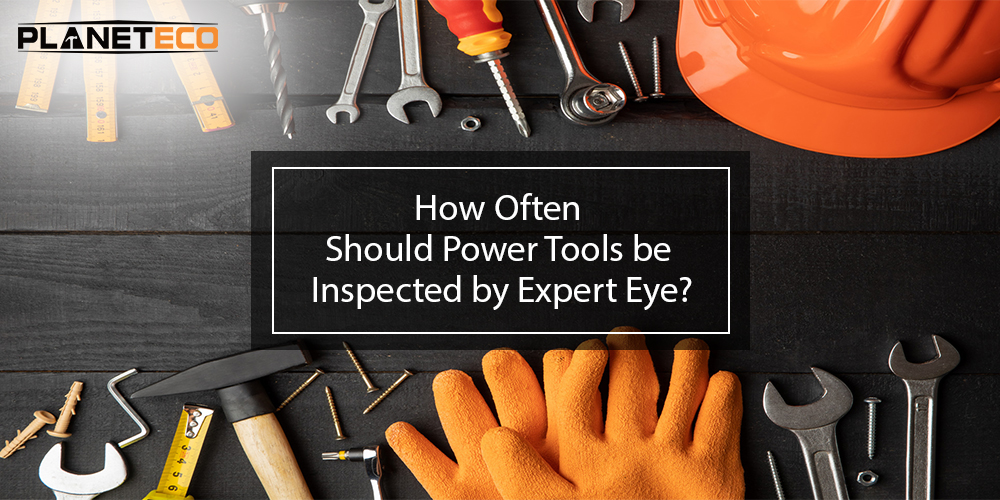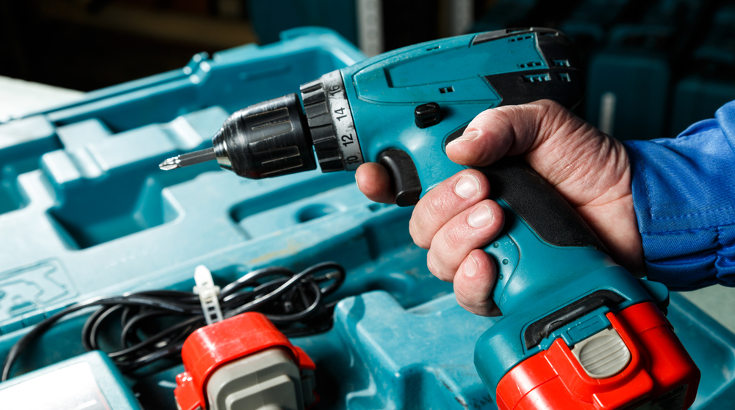Hey there! Let’s talk about power tools and the importance of regular inspections. 🔧 In this article, we’ll explore how often power tools should be inspected to ensure they are safe and in good working condition. So if you’re a DIY enthusiast or simply interested in learning more about tool maintenance, you’re in the right place!
When it comes to power tools, safety should always be a top priority. 💪 Regular inspections play a crucial role in preventing accidents and maintaining the longevity of your tools. But how often should you perform these inspections? Well, that’s what we’re here to find out! By the end of this article, you’ll have a clear understanding of the recommended inspection frequency for your power tools.
Now, I know what you might be thinking. “Why should I bother inspecting my power tools?” Great question! Inspections help identify any potential issues or wear and tear that may compromise the tool’s performance or, even worse, put you at risk. So, whether you’re a professional tradesperson or an avid DIYer, knowing how often to inspect your power tools is essential for staying safe and getting the job done right.
So, let’s dive in and explore the best practices for inspecting your power tools. Ready? Let’s get started! 💡
Regular inspection of power tools is essential to ensure their safe and efficient operation. Although specific intervals may vary depending on factors such as tool type and frequency of use, a general guideline is to inspect power tools at least once a year. This includes checking for any visible damage, loose parts, frayed cords, and ensuring proper functionality. Additionally, it’s crucial to follow the manufacturer’s recommendations for inspection and maintenance. By regularly inspecting power tools, you can prevent potential accidents and prolong their lifespan.

How Often Should Power Tools Be Inspected?
Power tools are essential assets in various industries, ranging from construction to manufacturing. However, like any mechanical equipment, they require regular maintenance and inspection to ensure optimal performance and user safety. In this article, we will delve into the topic of how often power tools should be inspected, taking into consideration factors such as tool type, frequency of use, and safety regulations.
The Importance of Regular Inspection
Power tools are subject to wear and tear, which can compromise their functionality and pose a safety risk. Regular inspection helps identify any issues or potential hazards, enabling timely repairs or replacements. By establishing a consistent inspection schedule, you can ensure that your power tools remain in top condition, minimizing downtime and ensuring the safety of operators.
During inspections, various aspects of power tools should be assessed, including the electrical components, moving parts, and safety mechanisms. Inspections can uncover damaged cords, loose connections, worn-out blades, and other issues that may affect the tool’s performance or cause accidents. Additionally, inspections can help detect signs of misuse, such as improper storage or the use of incompatible accessories, allowing for corrective measures to avoid further damage.
Most importantly, regular inspections are crucial for complying with safety regulations. Occupational Safety and Health Administration (OSHA) guidelines require employers to ensure that power tools are inspected at regular intervals to prevent accidents or injuries. By adhering to these regulations, businesses can demonstrate their commitment to maintaining a safe working environment.
Factors Influencing Inspection Frequency
The frequency of power tool inspections depends on various factors that should be carefully considered. Here are some key factors that influence how often power tools should be inspected:
Type of Power Tool
The type of power tool determines the level of scrutiny required during inspections and the frequency at which they should be conducted. For instance, hand-held power tools like drills and sanders may need more frequent inspections compared to larger stationary tools such as table saws or milling machines. The complexity and number of moving parts in certain tools may warrant more frequent inspections to ensure proper functionality.
Additionally, the power source of the tool can also affect inspection frequency. For example, battery-powered tools may require battery checks and replacements, while electric powered-tools might need frequent inspections of electrical cords and outlets.
Frequency of Use
The frequency at which power tools are used also plays a crucial role in determining inspection frequency. Tools that are used more frequently or in demanding environments are subjected to more wear and tear, requiring more frequent inspections. Heavy daily usage may necessitate daily or weekly inspections, while tools used on a less regular basis may only need monthly or quarterly inspections.
Manufacturer’s Recommendations
It is essential to consult the manufacturer’s recommendations for each power tool regarding maintenance and inspection schedules. Manufacturers typically provide guidelines for inspection frequency based on their product’s design, intended usage, and expected wear and tear. Following these recommendations ensures that tools are inspected at the intervals specified by the manufacturer, which in turn helps maintain warranty coverage and ensures optimal performance.
Environmental Conditions
The environment in which power tools are used also affects the frequency of inspections. Harsh environmental conditions, such as high humidity, extreme temperatures, or exposure to dust and debris, can accelerate the wear and tear of power tools. In such cases, more frequent inspections and preventive maintenance may be necessary to mitigate potential damage.
Environmental considerations also extend to the storage and transportation of power tools. Tools that are stored in damp or dusty environments or transported without proper protection may require additional inspections to detect and address any damage that may have occurred during storage or transportation.
Best Practices for Power Tool Inspections
Now that we have explored the factors influencing inspection frequency, here are some best practices to ensure thorough and effective power tool inspections:
Create a Inspection Schedule
Establish a regular inspection schedule based on the factors discussed earlier. Take into account the type of tool, frequency of use, and environmental conditions to determine the appropriate inspection intervals. Documenting and following this schedule ensures that inspections are conducted consistently and in a timely manner.
Perform Pre-Use Inspections
In addition to scheduled inspections, it is important to conduct pre-use inspections on power tools. Before each use, operators should visually inspect the tool for any visible damage, loose parts, or unusual noises. This simple step can prevent accidents and ensure that the tool is in a safe working condition.
Train and Educate Operators
Provide training and education to operators on proper tool usage, storage, and maintenance. Educated operators are more likely to identify potential issues during inspections and take appropriate action. Training should cover safety procedures, inspection checklists, and reporting protocols for damaged or malfunctioning tools.
Conclusion
Regular inspections are crucial for ensuring the safe and reliable operation of power tools. By adhering to recommended inspection schedules and considering factors like tool type, frequency of use, and environmental conditions, you can reduce the risk of accidents, optimize tool performance, and comply with safety regulations. Remember, the safety of your workers and the longevity of your power tools depend on proactive and consistent inspections.
Key Takeaways: How often should power tools be inspected?
- Regular inspection of power tools ensures safety and proper functioning.
- It is recommended to inspect power tools before each use.
- Power tools should be inspected by a trained professional at least once a year.
- Inspect power cords, handles, and blades for any signs of wear or damage.
- If any issues are found during inspection, power tools should be repaired or replaced immediately.
Frequently Asked Questions
Welcome to our FAQ page, where we address common questions about the frequency of inspecting power tools. We understand the importance of maintaining the safety and performance of your tools, so let’s get started!
1. How often should I inspect my power tools?
It is recommended to inspect your power tools at least once every year, even if they appear to be in good working condition. Regular inspections can help identify any potential issues before they become major problems. Additionally, more frequent inspections are advisable for tools that are heavily used or exposed to harsh environments.
Remember, the safety of the operator is paramount, and regular inspections ensure that your power tools are functioning properly and pose no risk of accidents.
2. What should I look for during a power tool inspection?
During a power tool inspection, you should check for several key factors. Firstly, inspect the power cords for any signs of fraying or damage. Next, examine the switches and triggers to ensure they are working smoothly and securely.
Additionally, inspect the outer casing for any cracks or dents that may affect the tool’s performance. Lastly, check the blades, bits, or attachments for any signs of wear or damage. If you notice any issues during the inspection, it is crucial to address them promptly to avoid further complications.
3. Can I perform power tool inspections myself, or should I hire a professional?
While some basic power tool inspections can be performed by the owners themselves, it is advisable to have a professional inspection at least once every few years or when you encounter a problem that you cannot address. A professional inspection ensures a thorough examination of your power tools, including internal components that may require specialized knowledge.
Hiring a professional not only provides peace of mind but also guarantees that your tools are inspected by someone with expertise and experience in identifying potential issues and ensuring compliance with safety standards.
4. Are there any specific safety guidelines I should follow when inspecting power tools?
Absolutely! Safety should always be a top priority when inspecting power tools. Firstly, make sure the tool is unplugged or the battery is removed before starting the inspection. This prevents accidental startups.
Wear appropriate personal protective equipment (PPE), such as safety glasses and gloves, to safeguard yourself from any potential hazards. Additionally, follow the manufacturer’s instructions, especially when it comes to handling and storing the tools. Remember, proper safety practices not only protect you but also extend the lifespan of your power tools.
5. Can regular inspections extend the life of my power tools?
Absolutely! Regular inspections play a crucial role in extending the lifespan of your power tools. By identifying and addressing any issues early on, you can prevent them from escalating and causing more significant damage to the tool.
Moreover, regular maintenance, including inspections, allows you to keep your power tools in optimal working condition, ensuring they perform at their best for a longer period. This can save you money in the long run by reducing the need for frequent repairs or premature tool replacements.

Summary
Power tools should be inspected regularly to ensure safety and prevent accidents. Regular inspections help identify any potential issues or damage before they become big problems. Inspect your tools before each use and keep an eye out for signs of wear or damage. Remember to follow the manufacturer’s instructions for maintenance and inspection intervals. Taking these steps will keep you safe and your tools in good working condition.
It’s important to note that even if your power tools seem to be working fine, regular inspections are still necessary. Small issues can quickly escalate, leading to malfunctions or accidents. By making inspections a habit, you’ll be proactive in maintaining the safety and performance of your power tools. Stay safe and keep your tools in tip-top shape!
